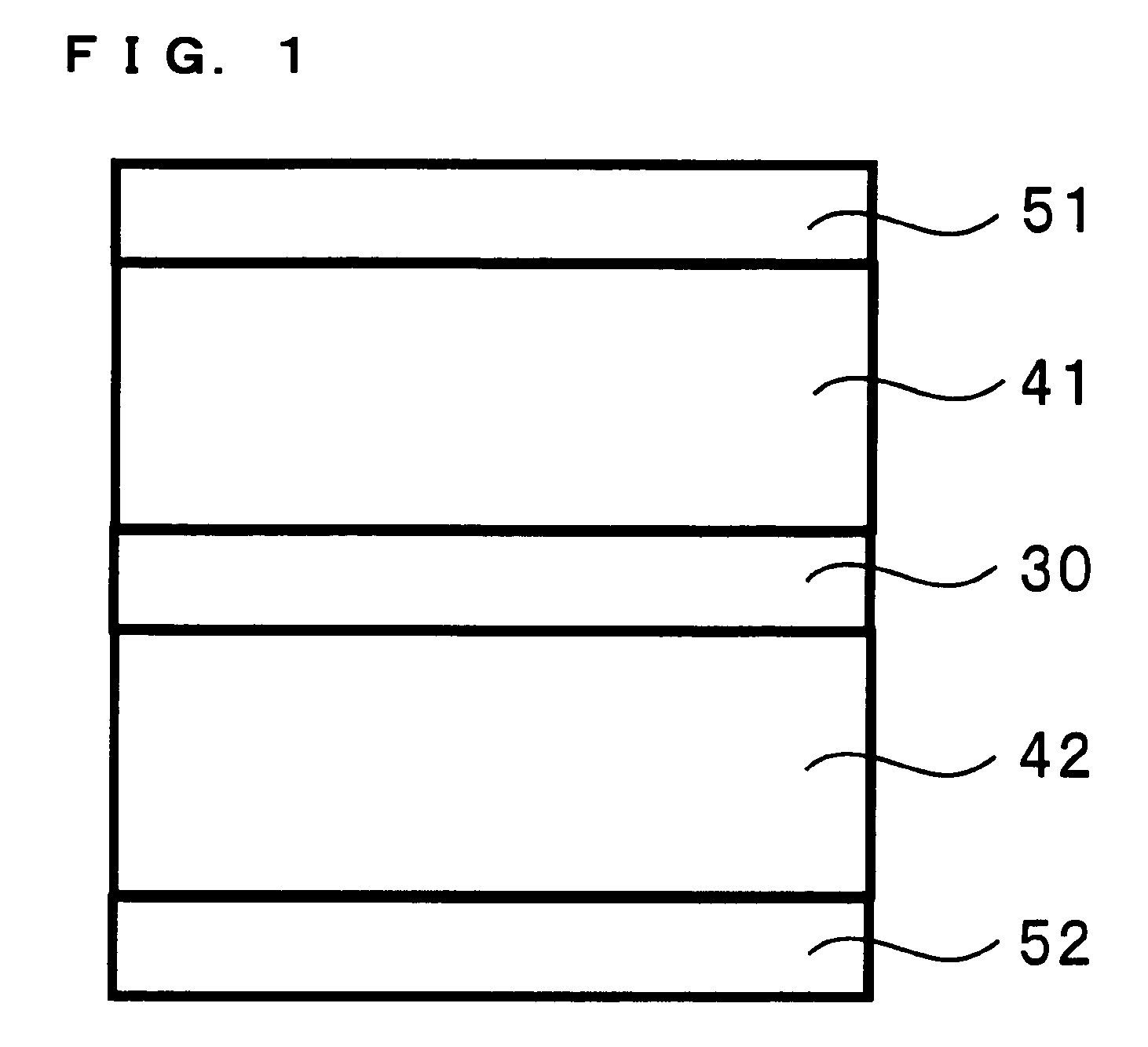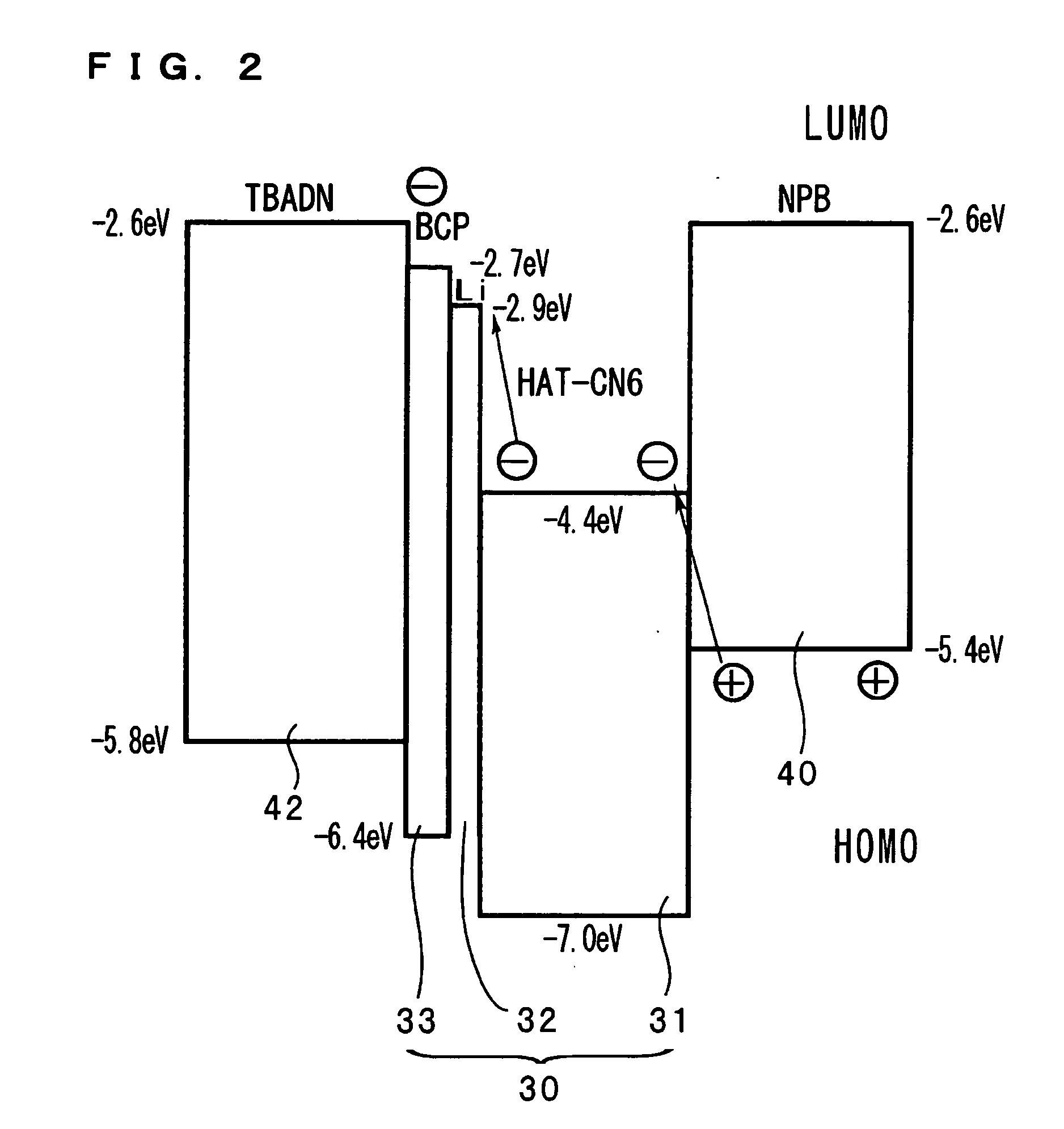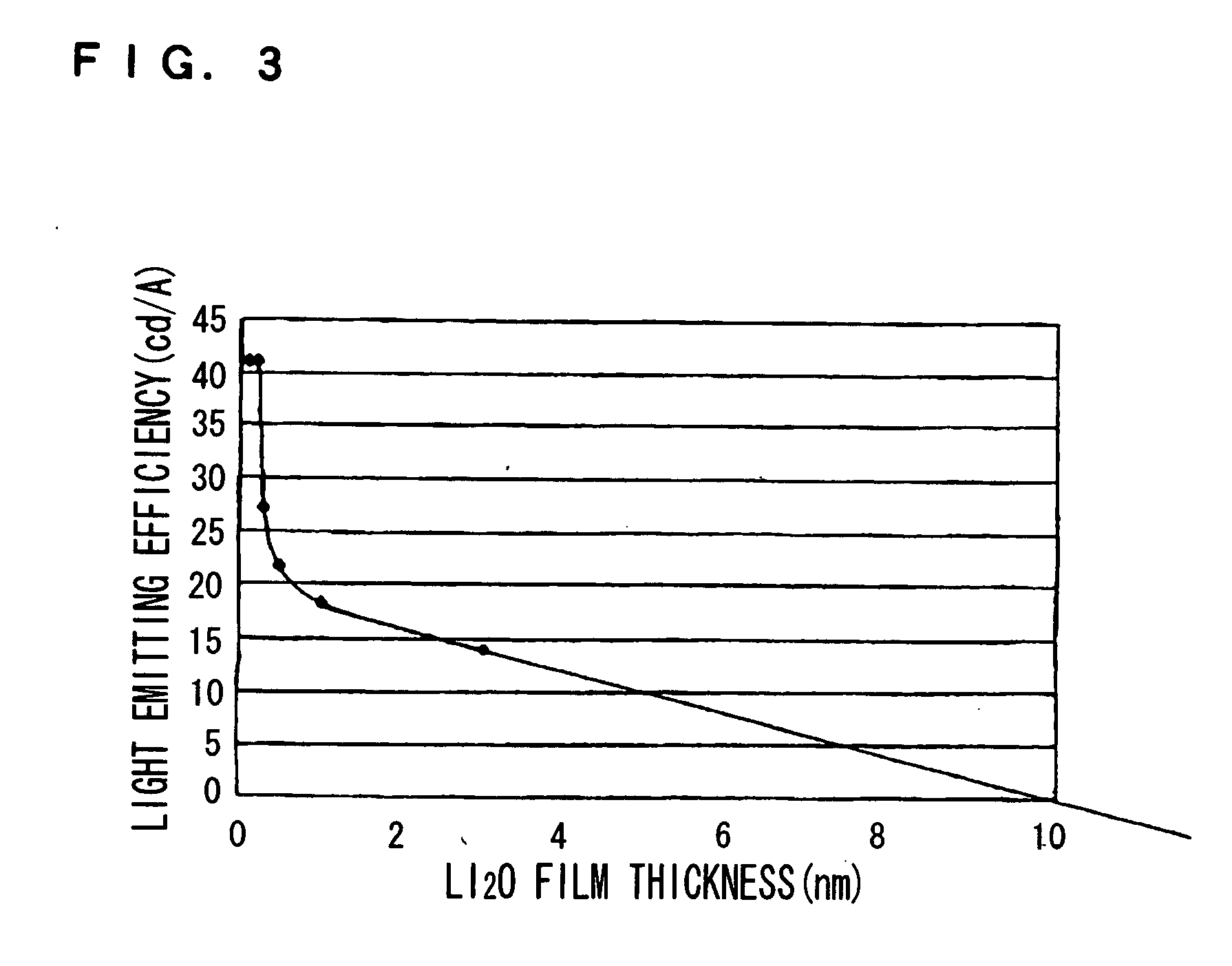Organic electroluminescent element and organic electroluminescent display device
a technology of electroluminescent elements and organic electroluminescent elements, which is applied in the direction of discharge tube luminescnet screens, natural mineral layered products, transportation and packaging, etc., can solve the problems of limited limitation of expansion of a region, and inability to achieve improvement in light emitting efficiency, etc., to achieve further high light emitting efficiency, and enhanced light emitting efficiency
- Summary
- Abstract
- Description
- Claims
- Application Information
AI Technical Summary
Benefits of technology
Problems solved by technology
Method used
Image
Examples
experiment 1
Examples 1 to 5 and Comparative Examples 1 to 2
[0141] Organic EL elements of Examples 1 to 5 and Comparative Examples 1 to 2 having an anode, a hole injecting layer, a second light emitting unit, an intermediate unit, a first light emitting unit, an electron transporting layer, and a cathode shown in Table 1 were manufactured. In the following Table, a numerical in ( ) indicates a thickness (nm) of each layer.
[0142] An anode was manufactured by forming a fluorocarbon (CFx) layer on a glass substrate on which an ITO (indium tin oxide) film had been formed. A fluorocarbon layer was formed by plasma polymerization of a CHF3 gas. A thickness of a fluorocarbon layer was 1 nm.
[0143] On the thus manufactured anode, a hole injecting layer, a second light emitting unit, an intermediate unit, a first light emitting unit, an electron transporting layer, and a cathode were formed by successively depositing them by a deposition method.
[0144] A hole injecting layer was formed from HAT-CN6.
[0...
experiment 2
Example 6 and Comparative Example 3
[0158] An organic EL element of Example 6 provided with an anode, a hole injecting layer, a second light emitting unit, an intermediate unit, a first light emitting unit, an electron transporting layer, and a cathode shown in Table 3 was manufactured as in the aforementioned Experiment 1. In addition, an organic EL element of Comparative Example 3 of a structure shown in Table 3, which is the same as the organic EL element of Example 4 except that an intermediate unit and a first light emitting unit were not possessed, was manufactured.
[0159] In the present Example, an adjacent layer comprising NPB is formed between a “HAT-CN6” layer of an intermediate unit, and a first light emitting unit. In addition, in the present Example, a first light emitting unit and a second light emitting unit are constructed of a blue single light emitting layer. Like this, when an arylamine-based hole transporting material such as NPB is not used as a host material in...
experiment 3
[0162] An organic EL element of Example 7 having an anode, a hole injecting layer, a second light emitting unit, an intermediate unit, a first light emitting unit, an electron transporting layer, and a cathode shown in Table 5 was manufactured as in the Experiment 1.
[0163] In the present Example, as a first light emitting unit and a second light emitting unit, the same blue single light emitting layer as that of Example 1 is used. In addition, in the present Example, an adjacent layer comprising TPD is provided in an intermediate unit. A hole transporting layer comprising NPB is provided between this adjacent layer comprising TPD, and a first light emitting unit.
[0164] In addition, in the present Example, TPD is used also in a hole injecting layer provided between an anode and a second light emitting unit. As shown in Table 5, a layer comprising TPD is provided between a “HAT-CN6” layer and a NPB layer.
[0165] TPD is N,N′-bis-(3-methylphenyl) -N,N′-bis-(phenyl)-benzidine, and has ...
PUM
| Property | Measurement | Unit |
|---|---|---|
| thickness | aaaaa | aaaaa |
| thickness | aaaaa | aaaaa |
| thicknesses | aaaaa | aaaaa |
Abstract
Description
Claims
Application Information
 Login to View More
Login to View More - R&D
- Intellectual Property
- Life Sciences
- Materials
- Tech Scout
- Unparalleled Data Quality
- Higher Quality Content
- 60% Fewer Hallucinations
Browse by: Latest US Patents, China's latest patents, Technical Efficacy Thesaurus, Application Domain, Technology Topic, Popular Technical Reports.
© 2025 PatSnap. All rights reserved.Legal|Privacy policy|Modern Slavery Act Transparency Statement|Sitemap|About US| Contact US: help@patsnap.com



